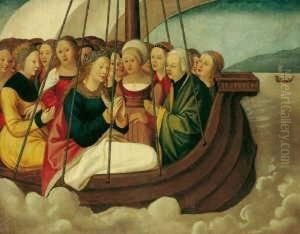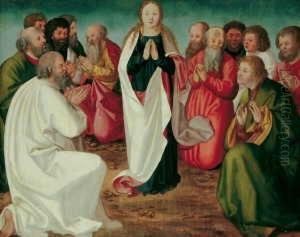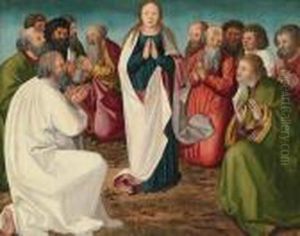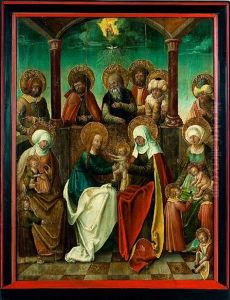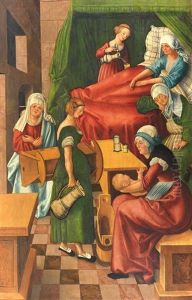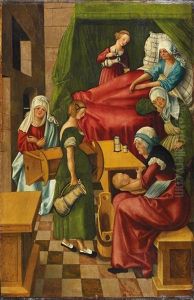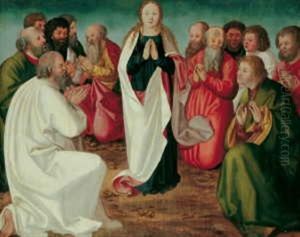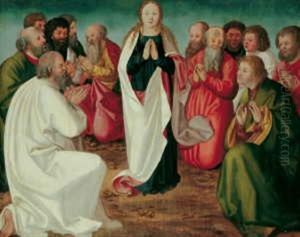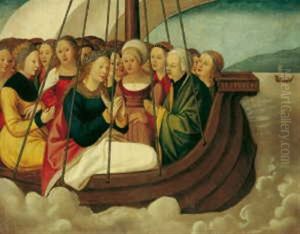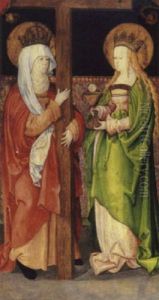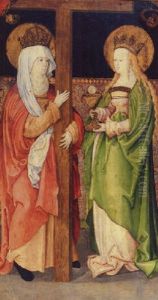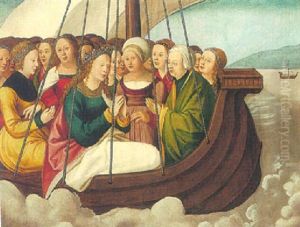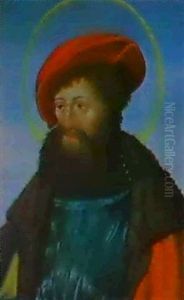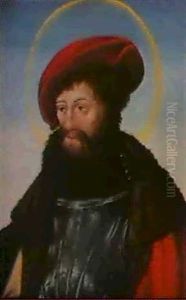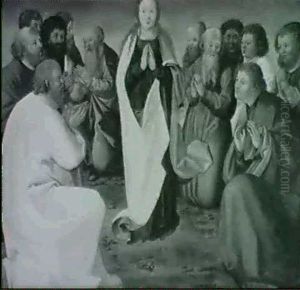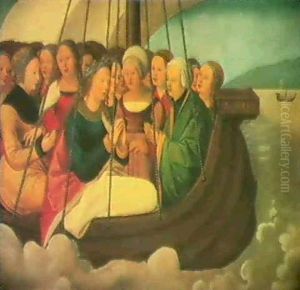Wolf Traut Paintings
Wolf Traut, born in 1485 in the Free Imperial City of Schwäbisch Gmünd or perhaps in Nuremberg, was a notable German painter and printmaker of the Renaissance period. His contributions to art are closely associated with the city of Nuremberg, a vibrant center for arts and culture during the 16th century. Traut's exact birthplace remains a subject of scholarly debate, but his impact on the German Renaissance art scene is well documented and celebrated. He worked during a period marked by significant transformations in art, where the emphasis shifted towards more naturalistic representations and the exploration of perspective.
Traut's artistic journey is often linked with Albrecht Dürer, one of the most renowned figures of the Northern Renaissance. Although there is no direct evidence of a formal apprenticeship, it is believed that Traut was significantly influenced by Dürer's style and techniques. This influence is evident in Traut's meticulous attention to detail, his use of vibrant colors, and the incorporation of religious and mythological themes in his works. Throughout his career, Traut developed a distinctive style that, while reflecting the broader trends of the Renaissance, also showcased his unique interpretations and innovations.
One of Traut's most significant contributions to the art world was his work in the medium of woodcut printing. He was among the artists who advanced this technique in Germany, creating detailed and complex prints that were widely disseminated. His ability to manipulate this medium allowed for the broader circulation of his and his contemporaries' ideas and images, playing a crucial role in the spread of Renaissance artistic principles beyond the confines of Italy and into Northern Europe.
Wolf Traut's legacy is also tied to his role as a court painter to Frederick the Wise, Elector of Saxony. This position not only provided him with patronage but also placed him at the heart of the political and religious transformations of the time, including the early stages of the Protestant Reformation. His works from this period reflect the changing tastes and ideologies of his patrons, incorporating both traditional religious subjects and the emerging iconography associated with the Reformation.
Traut's death in 1520 marked the end of a brief but impactful career. While his life and work were relatively short-lived, his contributions to the German Renaissance and the development of printmaking techniques have ensured his place in art history. His works continue to be studied for their artistic and historical significance, offering insights into the complexities of Renaissance art and culture in Germany.
